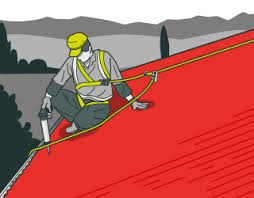As experienced roofing professionals, we often get questions about roof pitch from homeowners. Your roof’s pitch is more than just an architectural detail – it’s a crucial factor that affects everything from water drainage to maintenance costs. In this comprehensive guide, we’ll explain what roof pitch is, why it’s important, and how to measure it correctly.
What Is Roof Pitch?
Roof pitch, also known as roof slope, refers to the steepness or angle of your roof. It’s typically expressed as a ratio that represents how many inches the roof rises vertically for every 12 inches of horizontal distance. For example, a 6:12 pitch means the roof rises 6 inches for every 12 inches of horizontal run.

Why Does Roof Pitch Matter?
1. Water and Snow Management
- Steeper pitches allow water and snow to run off more quickly
- Lower pitches may require additional waterproofing measures
- Proper drainage prevents water damage and extends roof life
2. Material Selection
- Different roofing materials work better with specific pitches
- Asphalt shingles typically require a minimum 4:12 pitch
- Low-slope roofs need specialized materials and installation techniques
3. Attic Space and Ventilation
- Steeper pitches create more attic space
- Better ventilation opportunities in steeper roofs
- Improved energy efficiency potential
4. Maintenance Requirements
- Steeper roofs may be more challenging to maintain
- Lower pitches might need more frequent cleaning
- Pitch affects accessibility for repairs and inspections
How to Measure Roof Pitch
At Brown’s Roofing, we use professional tools to measure roof pitch, but homeowners can get a rough estimate using these methods:
Method 1: From Inside the Attic
- Place a level horizontally against a rafter
- Measure 12 inches along the level
- Measure the vertical distance from the level to the rafter
- The vertical measurement gives you the rise in the pitch ratio
Method 2: From the Roof Edge
- Place a level against the roof edge
- Measure 12 inches horizontally
- Measure the vertical rise
- Calculate the ratio (rise:12)
Common Roof Pitches and Their Applications
- Low Pitch (2:12 to 4:12)
- Commercial buildings
- Modern home designs
- Porches and additions
- Medium Pitch (4:12 to 8:12)
- Most residential homes
- Traditional house styles
- Optimal for various roofing materials
- Steep Pitch (8:12 and higher)
- Victorian-style homes
- Gothic architecture
- Areas with heavy snowfall

Safety Considerations
Remember that measuring roof pitch involves working at heights. At Brown’s Roofing, we always prioritize safety and recommend homeowners leave roof measurements to professional contractors. Our team has the proper equipment and experience to safely assess your roof’s characteristics.
When to Contact Brown’s Roofing
If you need to know your roof’s pitch for:
- Planning a roof replacement
- Installing new ventilation
- Adding solar panels
- Insurance purposes
Contact our experienced team at Brown’s Roofing. We’ll provide accurate measurements and professional advice tailored to your specific roofing needs.
Conclusion
Understanding your roof’s pitch is essential for proper maintenance, repairs, and future roofing decisions. While this guide provides basic information, remember that professional assessment is always the safest and most accurate approach. Brown’s Roofing is here to help with all your roofing needs, from pitch measurement to complete roof installations.
